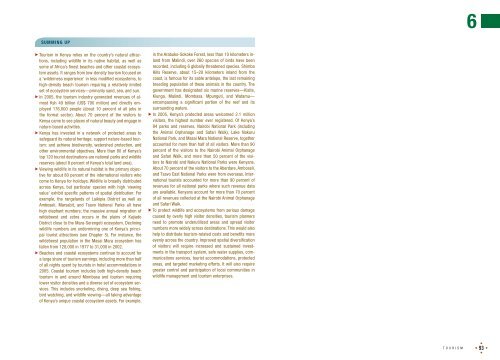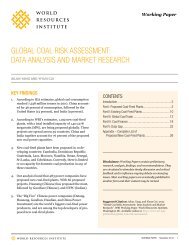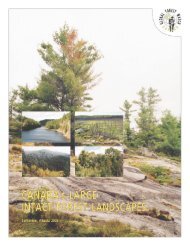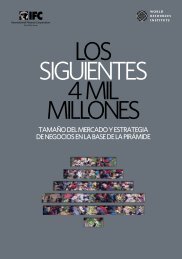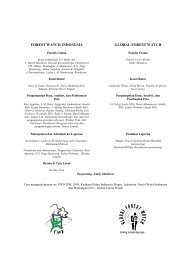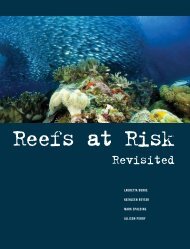Map 6.7 Areas within 25 Kilometers of Most - World Resources Institute
Map 6.7 Areas within 25 Kilometers of Most - World Resources Institute
Map 6.7 Areas within 25 Kilometers of Most - World Resources Institute
Create successful ePaper yourself
Turn your PDF publications into a flip-book with our unique Google optimized e-Paper software.
SUMMING UP<br />
u Tourism in Kenya relies on the country’s natural attractions,<br />
including wildlife in its native habitat, as well as<br />
some <strong>of</strong> Africa’s finest beaches and other coastal ecosystem<br />
assets. It ranges from low-density tourism focused on<br />
a ‘wilderness experience’ in less modified ecosystems, to<br />
high-density beach tourism requiring a relatively limited<br />
set <strong>of</strong> ecosystem services—primarily sand, sea, and sun.<br />
u In 2005, the tourism industry generated revenues <strong>of</strong> almost<br />
Ksh 49 billion (US$ 700 million) and directly employed<br />
176,000 people (about 10 percent <strong>of</strong> all jobs in<br />
the formal sector). About 70 percent <strong>of</strong> the visitors to<br />
Kenya came to see places <strong>of</strong> natural beauty and engage in<br />
nature-based activities.<br />
u Kenya has invested in a network <strong>of</strong> protected areas to<br />
safeguard its natural heritage; support nature-based tourism;<br />
and achieve biodiversity, watershed protection, and<br />
other environmental objectives. More than 80 <strong>of</strong> Kenya’s<br />
top 120 tourist destinations are national parks and wildlife<br />
reserves (about 8 percent <strong>of</strong> Kenya’s total land area).<br />
u Viewing wildlife in its natural habitat is the primary objective<br />
for about 80 percent <strong>of</strong> the international visitors who<br />
come to Kenya for holidays. Wildlife is broadly distributed<br />
across Kenya, but particular species with high ‘viewing<br />
value’ exhibit specific patterns <strong>of</strong> spatial distribution: For<br />
example, the rangelands <strong>of</strong> Laikipia District as well as<br />
Amboseli, Marsabit, and Tsavo National Parks all have<br />
high elephant numbers; the massive annual migration <strong>of</strong><br />
wildebeest and zebra occurs in the plains <strong>of</strong> Kajiado<br />
District close to the Mara-Serengeti ecosystem. Declining<br />
wildlife numbers are undermining one <strong>of</strong> Kenya’s principal<br />
tourist attractions (see Chapter 5). For instance, the<br />
wildebeest population in the Masai Mara ecosystem has<br />
fallen from 120,000 in 1977 to 31,000 in 2002.<br />
u Beaches and coastal ecosystems continue to account for<br />
a large share <strong>of</strong> tourism earnings, including more than half<br />
<strong>of</strong> all nights spent by tourists in hotel accommodations in<br />
2005. Coastal tourism includes both high-density beach<br />
tourism in and around Mombasa and tourism requiring<br />
lower visitor densities and a diverse set <strong>of</strong> ecosystem services.<br />
This includes snorkeling, diving, deep sea fishing,<br />
bird watching, and wildlife viewing—all taking advantage<br />
<strong>of</strong> Kenya’s unique coastal ecosystem assets. For example,<br />
in the Arabuko-Sokoke Forest, less than 10 kilometers inland<br />
from Malindi, over 260 species <strong>of</strong> birds have been<br />
recorded, including 6 globally threatened species. Shimba<br />
Hills Reserve, about 15–20 kilometers inland from the<br />
coast, is famous for its sable antelope, the last remaining<br />
breeding population <strong>of</strong> these animals in the country. The<br />
government has designated six marine reserves—Kisite,<br />
Kiunga, Malindi, Mombasa, Mpunguti, and Watamu—<br />
encompassing a significant portion <strong>of</strong> the reef and its<br />
surrounding waters.<br />
u In 2005, Kenya’s protected areas welcomed 2.1 million<br />
visitors, the highest number ever registered. Of Kenya’s<br />
84 parks and reserves, Nairobi National Park (including<br />
the Animal Orphanage and Safari Walk), Lake Nakuru<br />
National Park, and Masai Mara National Reserve, together<br />
accounted for more than half <strong>of</strong> all visitors. More than 90<br />
percent <strong>of</strong> the visitors to the Nairobi Animal Orphanage<br />
and Safari Walk, and more than 50 percent <strong>of</strong> the visitors<br />
to Nairobi and Nakuru National Parks were Kenyans.<br />
About 70 percent <strong>of</strong> the visitors to the Aberdare, Amboseli,<br />
and Tsavo East National Parks were from overseas. International<br />
tourists accounted for more than 90 percent <strong>of</strong><br />
revenues for all national parks where such revenue data<br />
are available. Kenyans account for more than 70 percent<br />
<strong>of</strong> all revenues collected at the Nairobi Animal Orphanage<br />
and Safari Walk.<br />
u To protect wildlife and ecosystems from serious damage<br />
caused by overly high visitor densities, tourism planners<br />
need to promote underutilized areas and spread visitor<br />
numbers more widely across destinations. This would also<br />
help to distribute tourism-related costs and benefits more<br />
evenly across the country. Improved spatial diversification<br />
<strong>of</strong> visitors will require increased and sustained investments<br />
in the transport system, safe water supplies, communications<br />
services, tourist accommodations, protected<br />
areas, and targeted marketing efforts. It will also require<br />
greater control and participation <strong>of</strong> local communities in<br />
wildlife management and tourism enterprises.<br />
6<br />
p<br />
93<br />
T O U R I S M t u<br />
q


